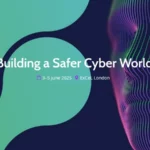What is Critical Infrastructure Cybersecurity?
Critical infrastructure cybersecurity refers to protecting systems, networks, and assets, whether physical or virtual, considered essential for national security and societal stability. These infrastructures are fundamental to the functioning of society. A data breach, intrusion, or malicious attack on such assets can compromise sensitive information, disrupt operations, and cause widespread damage. Hackers, cybercriminals, and state-sponsored attackers frequently target these systems, making cyber security infrastructure a top national priority.
Why is Cybersecurity Essential for Critical Infrastructure?
Critical infrastructure cybersecurity has become a top priority in today’s interconnected digital world. As nations increasingly rely on information technology and constant connectivity, securing vital systems, such as energy, transportation, water, and communications, has become more urgent than ever. These infrastructures are foundational to a country’s economy, security, and daily life, making their protection essential to national well-being.
Cybersecurity breaches or malicious attacks targeting critical infrastructure can severely disrupt entire countries, resulting in major service outages, economic damage, and threats to public safety. The ripple effects can destabilize multiple sectors, highlighting the need for robust and proactive cybersecurity strategies. Safeguarding these systems is vital to ensuring the resilience and continuity of essential services in the face of growing threats.
Critical Infrastructure Cyber-Attacks
While natural disasters and other physical threats continue to pose risks, cyber-attacks have emerged as the dominant danger to critical infrastructure. Hackers and cybercriminals often target these vital systems with malicious intent. Such cyber-attacks include ransomware, phishing schemes, data breaches, and other intrusions, all of which can disrupt operations and compromise sensitive information.
Governments and organizations must adopt proactive cybersecurity measures to safeguard against these evolving threats. Critical infrastructure cybersecurity is no longer optional; it is an essential part of ensuring national security and protecting society from the growing risks in the digital age.
To learn more about critical energy infrastructure and its cybersecurity measures, visit the European Commission’s page.

Critical Infrastructure Cybersecurity Challenges
Critical infrastructure cybersecurity risks are often amplified by outdated systems. Programmable logic controllers (PLCs), essential components across various sectors, frequently lack robust security measures due to their age. These legacy systems were not initially designed with cybersecurity in mind, making them particularly susceptible to cyberattacks. Similarly, power facilities rely on aging technology that was not built to address modern cyber threats, leaving them as prime targets for cybercriminals and hackers.
IoT and the Expanding Attack Surface
Another challenge is the insufficient attention given to critical infrastructure cybersecurity across industries. While new technologies are introduced to enhance efficiency and customer experience, insufficient focus is placed on addressing the constant threats posed by bad actors seeking to exploit vulnerabilities. Furthermore, many organizations are integrating IoT devices into their critical infrastructure. While these devices enhance efficiency, they also increase the number of potential entry points for cyberattacks. While these devices enhance efficiency, they also expand the attack surface, providing more entry points for cybercriminals to exploit.
The Human Factor
Perhaps one of the most significant challenges is the human factor. Employees often represent the weakest link in the security chain. Raising awareness about cybersecurity best practices and implementing effective incident response protocols are crucial steps in reducing the risk of cyberattacks. Without proper education on emerging threats and attack methods, employees may unknowingly contribute to data breaches or system compromises, further weakening the organization’s cybersecurity posture.
Connectivity in Industrial Control Systems (ICS)
Industrial Control Systems (ICS) like SCADA and DCS have evolved over decades. With the rise of the Industrial Internet of Things (IIoT), ICS are now interconnected with external networks, heightening exposure to security risks like DDoS attacks. A large percentage of manufacturing devices are now connected to enterprise networks, underscoring the urgent need for robust vulnerability management, authentication protocols, and heightened security awareness within Operational Technology (OT). This growing connectivity also introduces new vulnerabilities, providing more opportunities for cybercriminals to exploit.
Critical Infrastructure Cybersecurity and Asset Visibility
To effectively protect critical infrastructure from cyber-attacks, organizations require complete visibility into their network hardware assets. Asset visibility is essential in identifying and managing vulnerabilities across the IT, OT, and IoT environments. Without a comprehensive inventory of assets, organizations cannot enforce security policies to prevent unauthorized access.
As the digital landscape continues to evolve, solutions that provide full device visibility are essential for strengthening cybersecurity infrastructure. Technologies that monitor hardware assets at the physical layer are key to preventing cyber threats. By detecting rogue devices and unauthorized hardware, organizations can proactively mitigate risks, prevent hacking attempts, and bolster the protection of critical infrastructure.
The Role of Hardware Security in Critical Infrastructure
Sepio’s platform delivers the physical layer coverage organizations need to achieve complete device visibility. This capability enables Sepio to protect against hardware-based attacks. As the leader in Rogue Device Mitigation (RDM), Sepio’s solution identifies, detects and handles all peripherals, ensuring no device goes unmanaged.
In addition to the deep physical layer visibility, Sepio’s platform includes a comprehensive policy enforcement mechanism. This feature recommends best practice policies and enables administrators to define strict or granular rules for the system to enforce. Such capabilities enable a zero trust hardware access (ZTA) approach. When a device breaches the pre-set policy, Sepio automatically initiates a mitigation process to instantly block unauthorized or rogue hardware.

Critical Infrastructure with Effective Security
Critical infrastructure cybersecurity is essential to ensuring national security and the well-being of society. As cyberattacks grow more sophisticated and prevalent, governments and organizations must adopt comprehensive security measures, including advanced visibility solutions, proactive incident response, and security awareness training for employees.
Protecting against cybercrime, hacking, and malicious attacks is an ongoing challenge. With Sepio’s advanced technology, organizations can strengthen their defenses against evolving cyber threats, ensuring that critical infrastructure remains secure and resilient in the face of rising digital risks.
Strengthen Your Critical Infrastructure Cybersecurity
Cyber threats are evolving, don’t let your organization fall behind. Sepio’s cutting-edge technology empowers you with full asset visibility, risk-based prioritization, and continuous protection against emerging cyber risks. Our advanced solutions detect and mitigate rogue devices, strengthen your security posture, and ensure compliance with industry regulations.
Effective cyber security for critical infrastructure is essential to safeguarding national security, public safety, and economic stability. Speak with one of our cybersecurity experts today to discover how Sepio can help you prevent unauthorized access, defend against sophisticated attacks, and secure your infrastructure against ever-evolving threats. Future-proof your security strategy, act now to stay resilient in an increasingly vulnerable digital world.
Download Critical Infrastructure Cybersecurity Brief (pdf)





